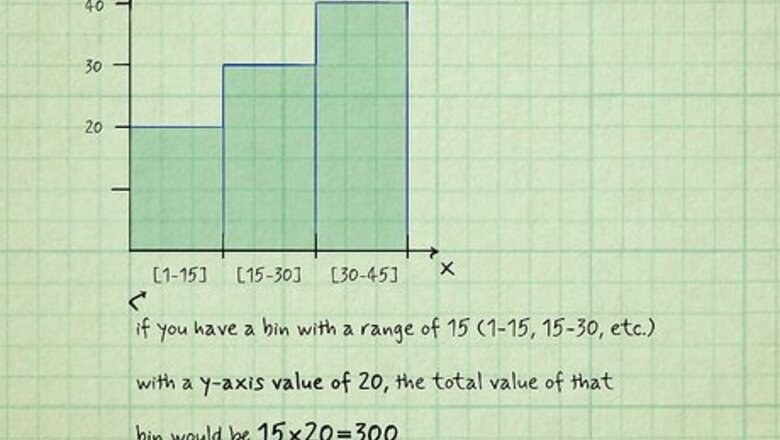
views
X
Research source
[v161418_b01. Tuesday, January 24, 2023.
To find the median, or middle value, of a histogram, add up every value in your data set, then add 1, and divide the result by 2. If you’re struggling with your stats homework, keep reading to get more detailed equations, plus tips on how to understand them.
- Add up all of the frequencies in the histogram. If you don’t have the frequencies yet, multiply the x value range of each bar by their y value (height).
- If the value is odd, add 1 and divide by 2 to find the median. The equation is n+1/2 where n equals the total value of frequencies.
- If the value is even, find the average of the middle two numbers. The equation is n/2+(n/2+1)/2
Finding the Median of a Histogram
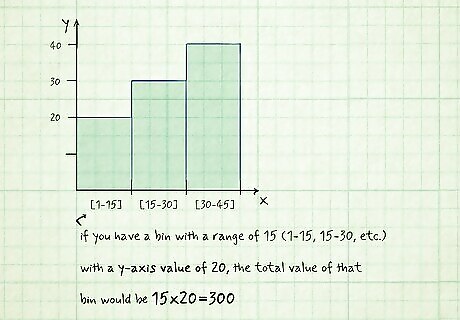
Determine the values of each bar on the histogram. If your problem doesn’t give you the total value of a given “bin” (the x-axis range, for example, 1-5) of the histograms, multiply the bin by the y-axis value. For example, if you have a bin with a range of 15 (1-15, 15-30, etc.) with a y-axis value of 20, the total value of that bin would be 15x20=300. Usually, the bins on a histogram are uniform (all 15 wide, for example), but if you’re working on a homework assignment, your teacher may make the bins different ranges to make it more difficult. For example, you may have a bin with a range of 20 and another with a range of 25. Consider writing your values in a frequency table. Frequency tables have two columns, one with values and one with how many times that value was recorded. So if the value “1” was recorded 7 times and the value “2” was recorded 3 times, then the first row of the table would be 1,7 and the second would be 2,3.
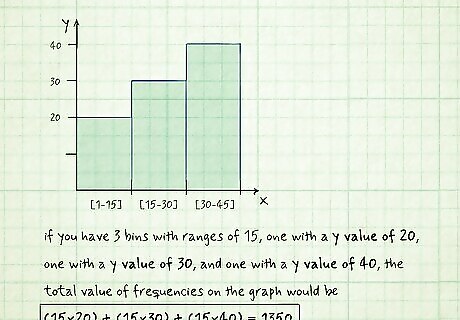
Add all of the frequencies together. Once you have the value of each bin, add all of them together to get the total value of frequencies on the graph. So if you have 3 bins with ranges of 15, one with a y value of 20, one with a y value of 30, and one with a y value of 40, the total value of frequencies on the graph would be (15x20) + (15x30) + (15x40) = 1350. The sum of the frequencies is also the total area of the graph.

If the value is odd, add 1 to the total value, then divide it by two. In mathematical notation, the equation looks like /2. The median is the exact middle of a data set, so it’s the value of the number equidistant from 1 to the total sum For example, 3 is the median of a data set with a summed value of 5: /2 = 3, 1, 2, 3, 4, 5.
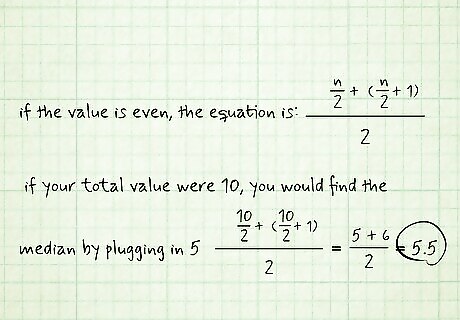
If the value is even, take the average of the middle two numbers. Since even numbers don’t have an exact middle, divide the number by 2, then find the average of that number and the following number. In mathematical nomination, the equation is /2. So if your total value were 10, you would find the median by plugging in 5 for /2 and 6 for /2 + 1. /2 = /2 = 5.5.
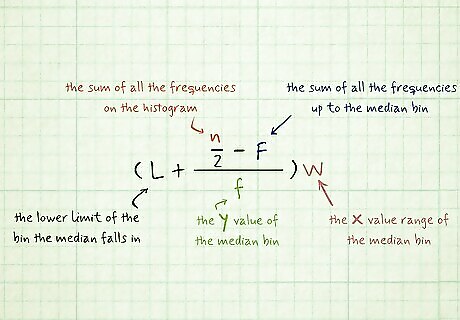
Estimate the exact value by using the equation L + (/f)w. Make L = the lower limit of the bin the median falls in, n = the sum of all the frequencies on the histogram, F = the sum of all the frequencies up to the median bin, f = the y value of the median bin, and w = the x value range of the median bin. F represents a cumulative frequency. Calculate cumulative frequency by adding the total values of each bin up until the bin that the median falls in. So if your median is in the bin "30-40" and your graph starts at zero, add the total values of bins 0-10, 10-20, and 20-30. If your histogram’s total value was 180, your median bin had an x-value of 30-40 and a y value of 35, and the cumulative frequency up to that bin was 60, then your equation would look like (30+/35)10 = (30+/35)10 = (30+/35)10 = (30+0.857)10 = 38.57. The result of this equation is the value on the x-axis that has equal areas on either side. So the area of the graph on the left is equal to the area of the graph on the right of the value.
Finding the Mean of a Histogram
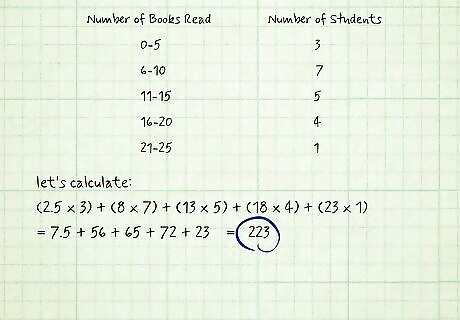
Add all of the values in the histogram. Multiply the width of each bin by the height (x-axis range of each bar by the y-axis value). Then, add them all together. This is the same as calculating the area of the graph.
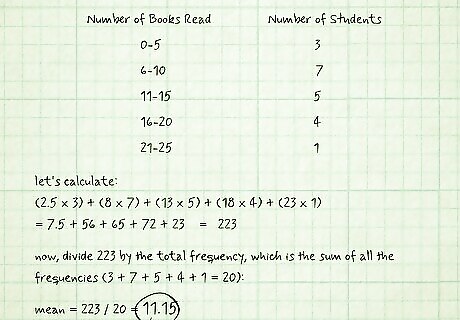
Divide the sum of the values by the number of data points. To find the average value in the graph, divide the total from the last step by the number of values that were recorded. So if you have a graph with 15 data points that add up to 300, then the mean would be /15 = 20. It may help to make a frequency table. To make the table, write all of the values that were recorded in one column, then write how many times each given value was recorded in the next column.

















Comments
0 comment